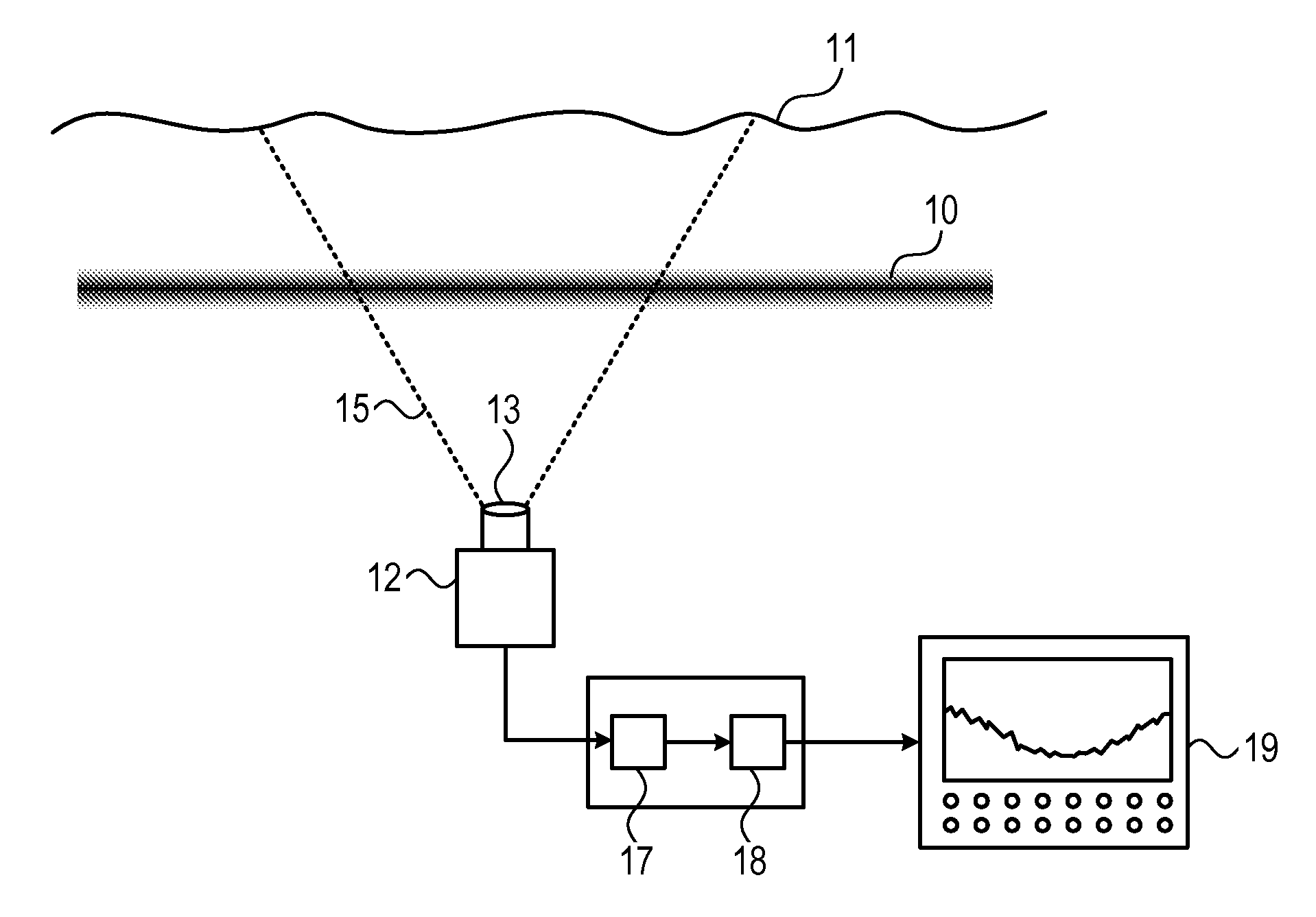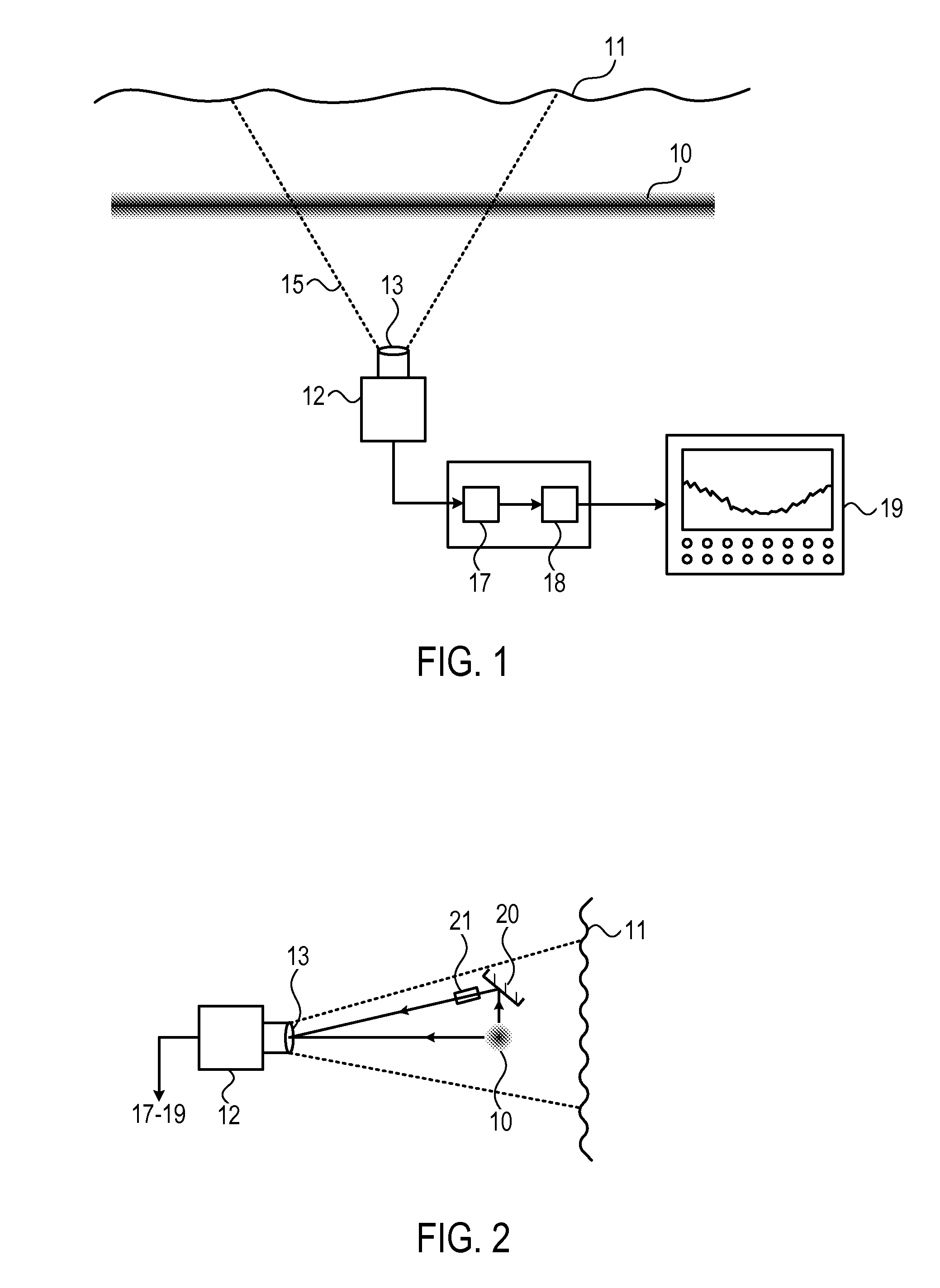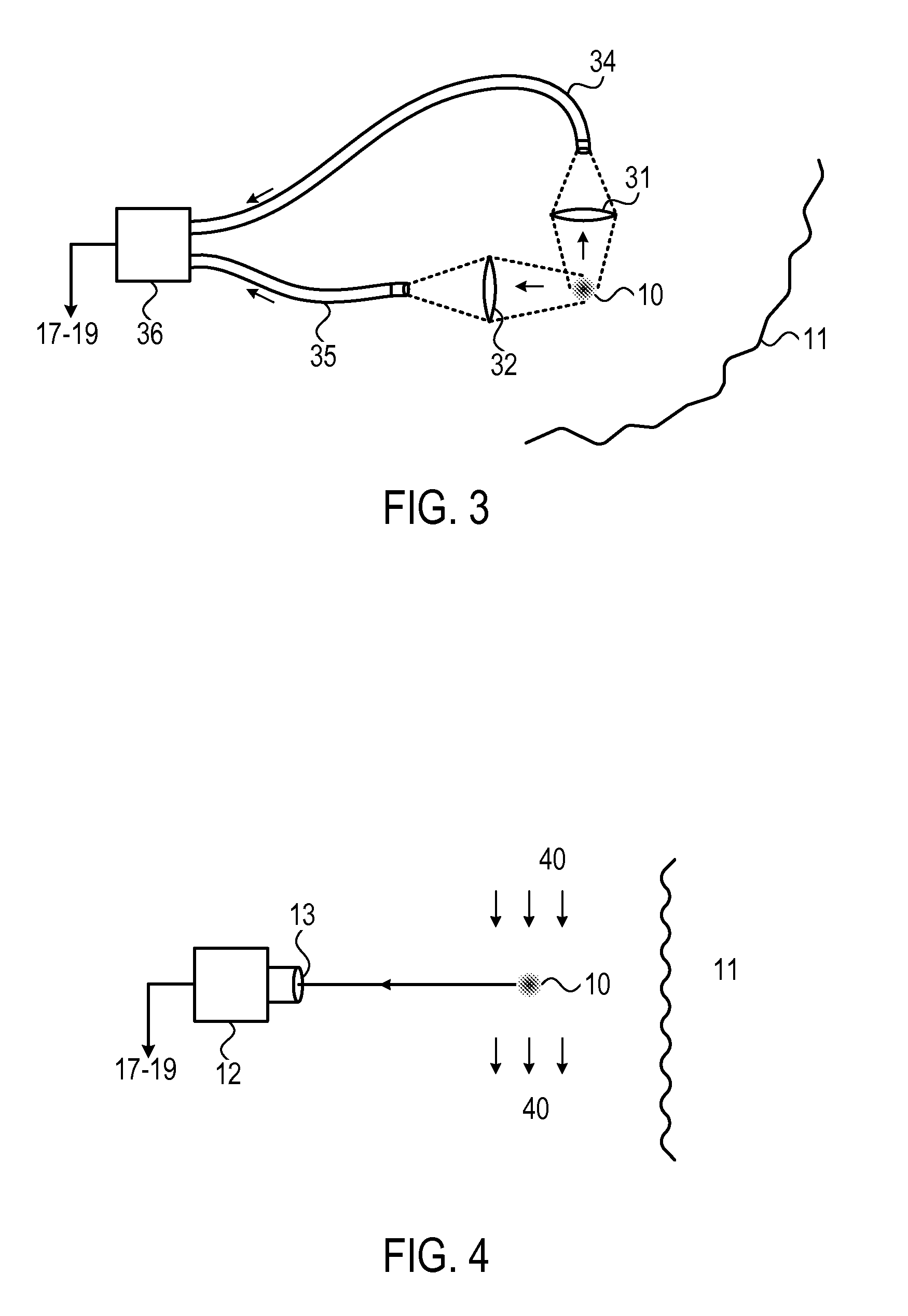Beam scattering laser monitor
a laser monitor and beam scattering technology, applied in the field of laser beam measurements, can solve the problems of more complex and bulky apparatuses, easy interference from extraneous sources of light, etc., and achieve the effect of reducing the level of such particles, avoiding dust contamination problems, and high measurement sensitivity
- Summary
- Abstract
- Description
- Claims
- Application Information
AI Technical Summary
Benefits of technology
Problems solved by technology
Method used
Image
Examples
Embodiment Construction
[0046]Reference is now made to FIG. 1, which illustrates schematically an exemplary laser beam characterization system, using Rayleigh scattering measurement, of the type described in this disclosure. The laser beam 10 is directed through a sampling region of interest, which can be the ambient air present in the location where the beam is to be measured. The air molecules in the path of the laser beam Rayleigh scatter the light of the laser beam in all directions. The sampling region is imaged, preferably normal to the direction of the beam path, by an imaging device such as a CCD camera 12 with a lens 13 designed to cover the sampling region of the beam, as indicated by the extremities 15 of the field of view along the beam path direction. Since it is usually desired to image a section of the beam path substantially longer than the beam diameter, the lens can advantageously be of partially cylindrical design, so that each image frame has far more image pixels along the length of th...
PUM
 Login to View More
Login to View More Abstract
Description
Claims
Application Information
 Login to View More
Login to View More - R&D
- Intellectual Property
- Life Sciences
- Materials
- Tech Scout
- Unparalleled Data Quality
- Higher Quality Content
- 60% Fewer Hallucinations
Browse by: Latest US Patents, China's latest patents, Technical Efficacy Thesaurus, Application Domain, Technology Topic, Popular Technical Reports.
© 2025 PatSnap. All rights reserved.Legal|Privacy policy|Modern Slavery Act Transparency Statement|Sitemap|About US| Contact US: help@patsnap.com



